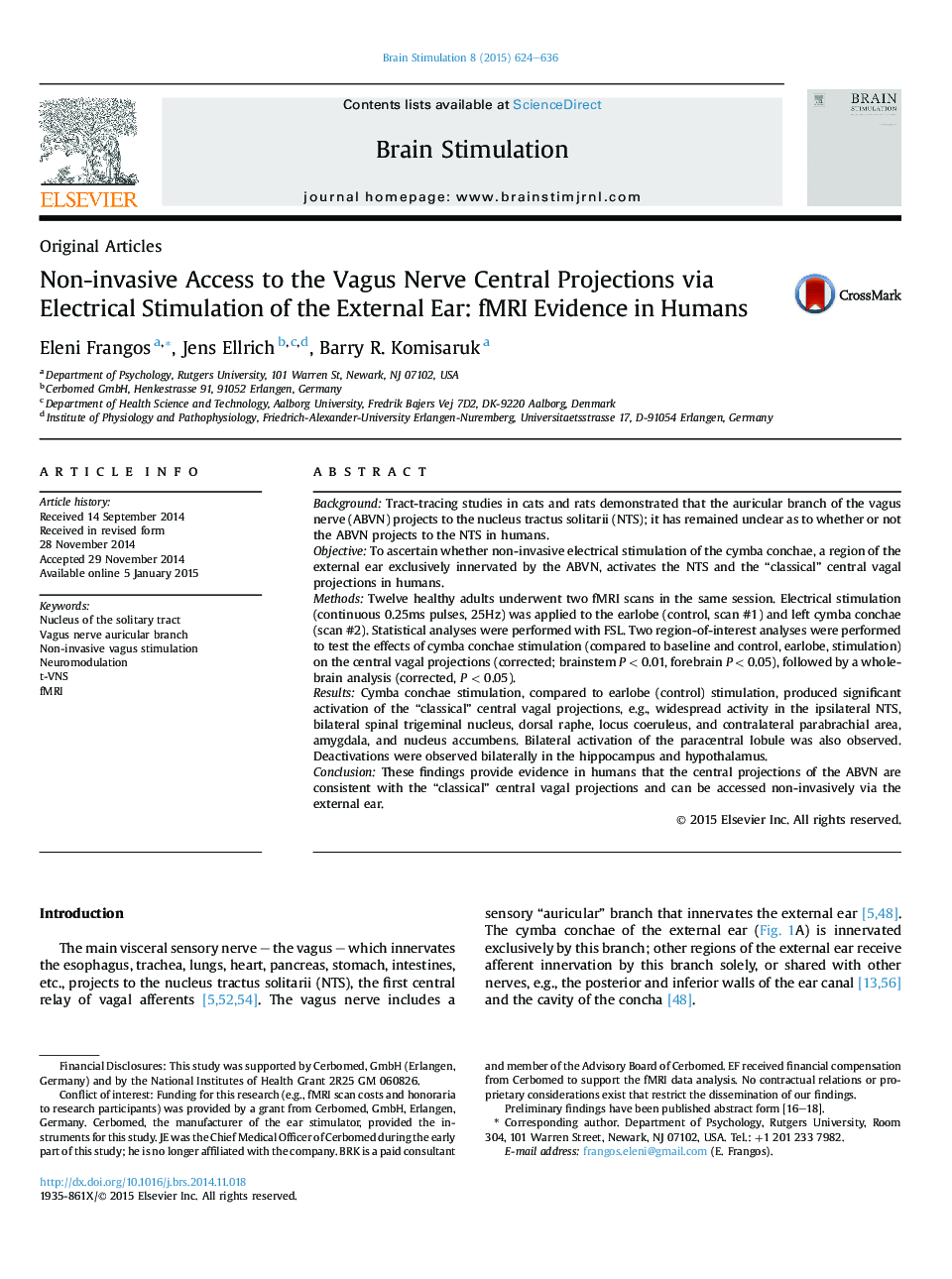| Article ID | Journal | Published Year | Pages | File Type |
|---|---|---|---|---|
| 6005323 | Brain Stimulation | 2015 | 13 Pages |
â¢Electrical stimulation of the cymba conchae activates the NTS in humans.â¢Activations and deactivations of vagal projections were found throughout the brain.â¢The pattern of activity can account for the beneficial effects of t-VNS and VNS.
BackgroundTract-tracing studies in cats and rats demonstrated that the auricular branch of the vagus nerve (ABVN) projects to the nucleus tractus solitarii (NTS); it has remained unclear as to whether or not the ABVN projects to the NTS in humans.ObjectiveTo ascertain whether non-invasive electrical stimulation of the cymba conchae, a region of the external ear exclusively innervated by the ABVN, activates the NTS and the “classical” central vagal projections in humans.MethodsTwelve healthy adults underwent two fMRI scans in the same session. Electrical stimulation (continuous 0.25ms pulses, 25Hz) was applied to the earlobe (control, scan #1) and left cymba conchae (scan #2). Statistical analyses were performed with FSL. Two region-of-interest analyses were performed to test the effects of cymba conchae stimulation (compared to baseline and control, earlobe, stimulation) on the central vagal projections (corrected; brainstem PÂ <Â 0.01, forebrain PÂ <Â 0.05), followed by a whole-brain analysis (corrected, PÂ <Â 0.05).ResultsCymba conchae stimulation, compared to earlobe (control) stimulation, produced significant activation of the “classical” central vagal projections, e.g., widespread activity in the ipsilateral NTS, bilateral spinal trigeminal nucleus, dorsal raphe, locus coeruleus, and contralateral parabrachial area, amygdala, and nucleus accumbens. Bilateral activation of the paracentral lobule was also observed. Deactivations were observed bilaterally in the hippocampus and hypothalamus.ConclusionThese findings provide evidence in humans that the central projections of the ABVN are consistent with the “classical” central vagal projections and can be accessed non-invasively via the external ear.
